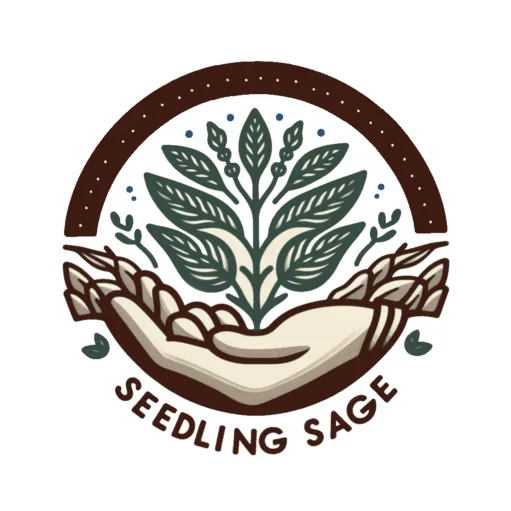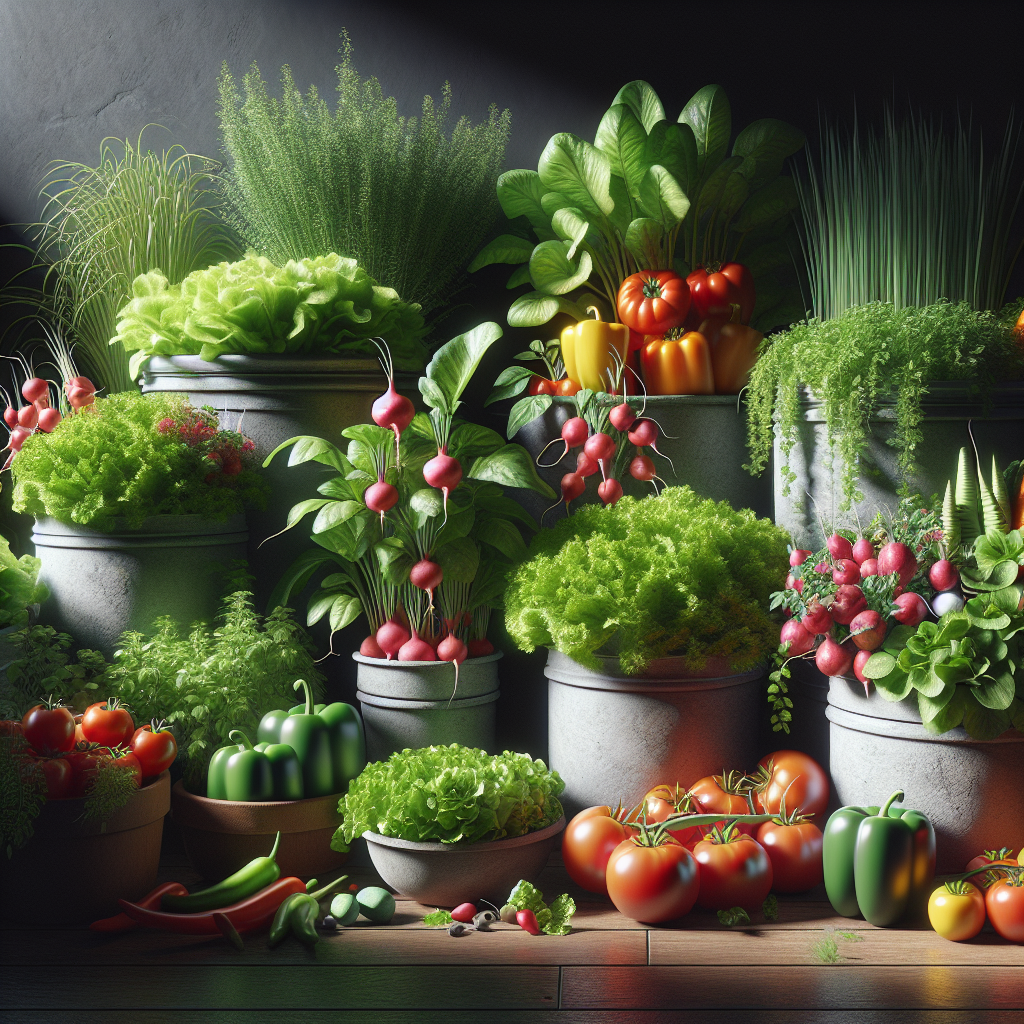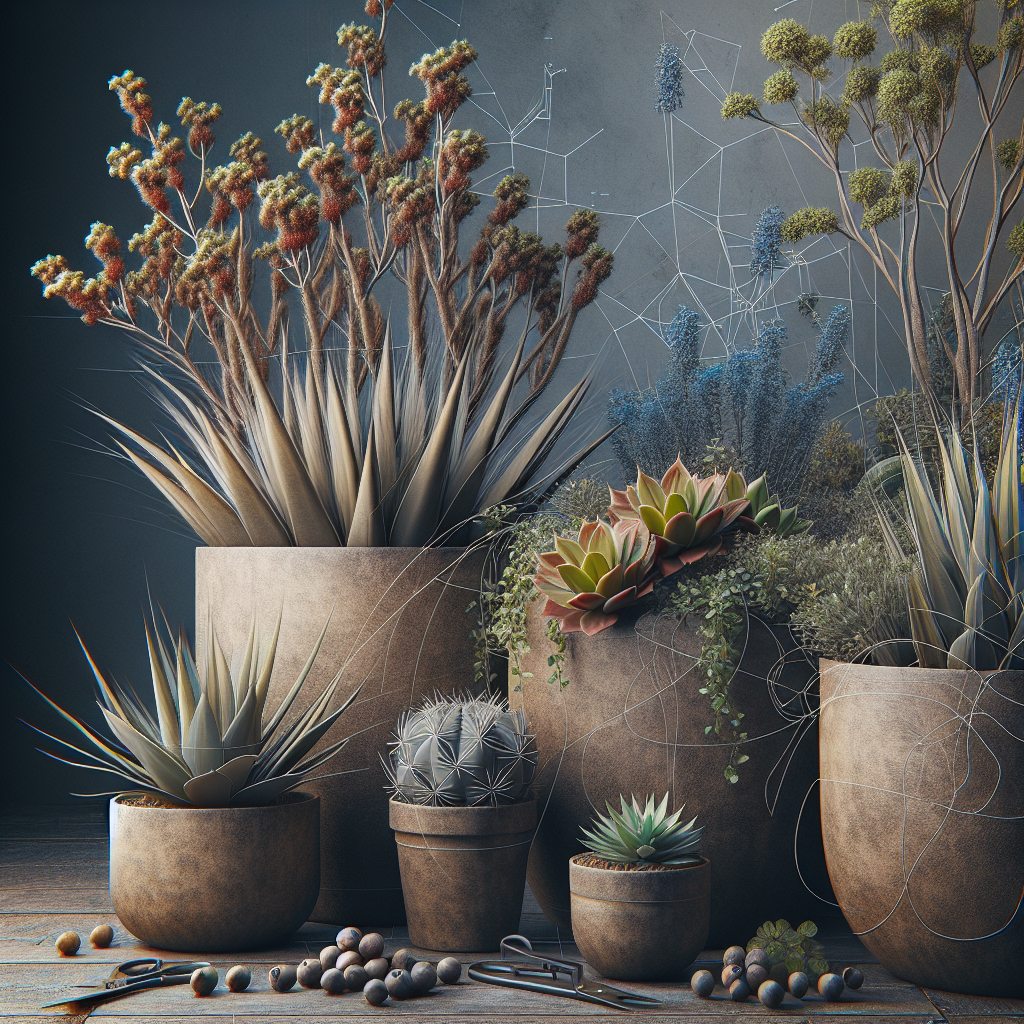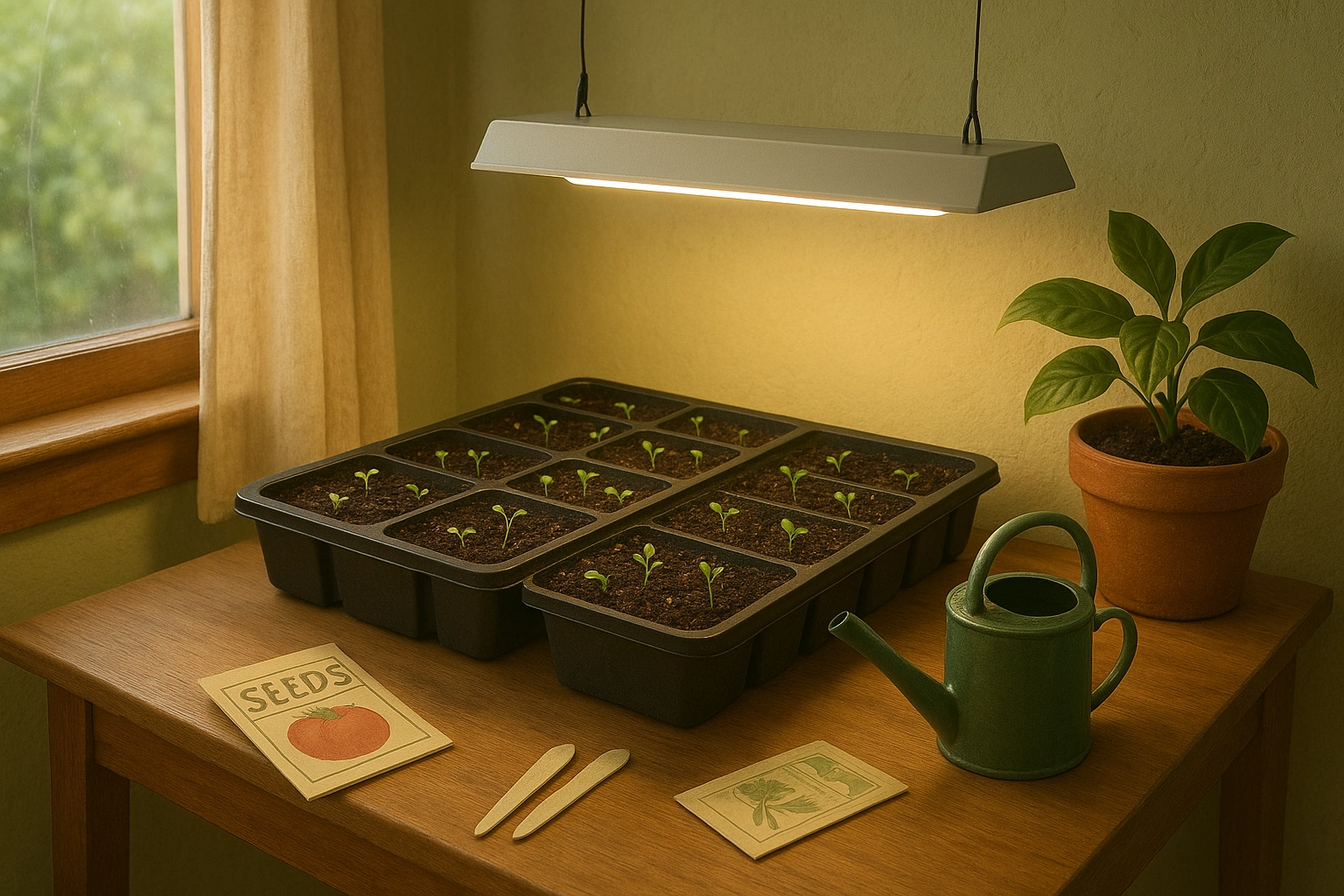Container Vegetable Gardening Made Simple: Tips for Beginners
October 30, 2024 | by Emma Sage
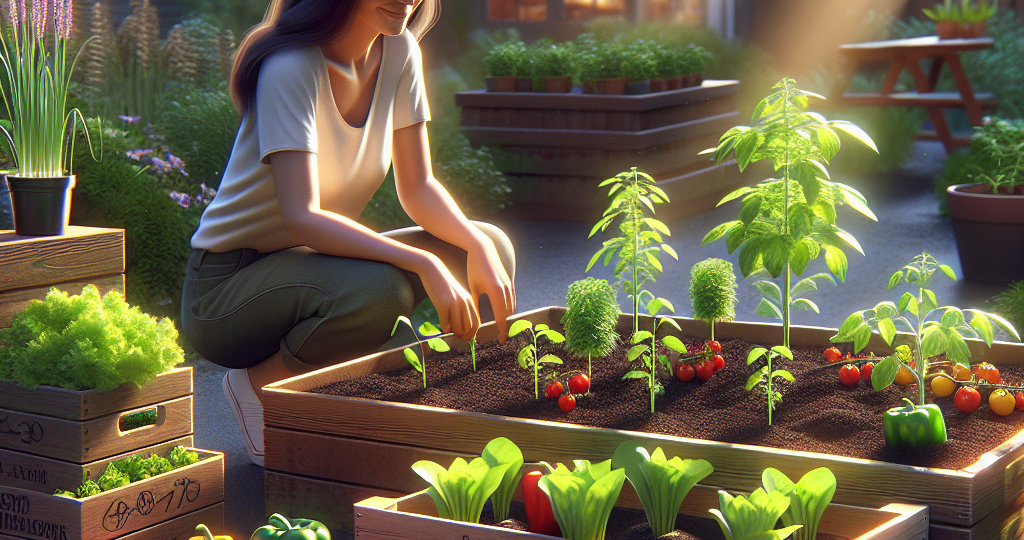
CONTAINER VEGETABLE GARDENING FOR BEGINNERS
13 min read
Join me in container vegetable gardening for beginners and unlock your urban gardening dreams today!
Getting Started with Container Gardening
Jumping into container gardening has been such a delight for me, especially since I’m nestled in the hustle and bustle of city life. Knowing the right way to go about it makes all the difference, so trust me—I learned the hard (and sometimes hilarious) way.
Essential Garden Tools for Beginners
From the get-go, I stumbled upon the good ol’ truth: right tools make the job half done. Here’s my go-to list for anyone just stepping into the wondrous chaos of container gardening:
| Tool Name | What’s It Do |
|---|---|
| Gloves | Keep your hands from turning into a miner’s nightmare |
| Pruning Shears | Snip and shape like an art project, minus the glue |
| Hand Trowel | Perfect for the little digging stuff and putting plants in |
| Garden Hose | Gets those thirsties taken care of; adjustable nozzles rock! |
| Watering Can | Spill control 101: get water exactly where you want it |
| Spade | Serious soil digging and busting—talk about dirt therapy |
| Rake | Bye-bye garden clutter; hello neat grounds for planting |
With these in my arsenal, plants behave better, and so do I! The soil quality can make or break the vegetables’ big debut, so a little soil test is never a bad call. Your local garden spots usually have goodies to whip that dirt into shape.

Avoiding Common Vegetable Gardening Mistakes
So, here’s the tea from me: veggies love pots, but a few no-no’s can trip you up. Here’s how I’ve sidestepped disaster (mostly):
- Choosing the Right Containers: You want a pot that’s cozy yet spacious, giving room to roots but with no soggy bottoms. Mini veggies are perfect for this scene, flexing with a compact size but delivering in full (Lovely Greens).
- Avoiding Peat Moss: Move over, peat moss! It’s good for the garden but not the planet. I’m all about those composted wood bits, bark, or the fancy-sounding coco coir (Lovely Greens).
- Making the Most of Limited Space: Living in the city means creativity over acreage. Balconies become bean-freakin’-casts, and patios switch to pint-sized plantations (Sprouted Garden).
- Watering Wisely: Watch for that soil thirst trap—over or under can spell doom. Potted plants flush quick, so stay vigilant.
Skipping out on these slip-ups can make a green-thumbed hero out of just about anyone. For a heap more tips and hacks, swing by container gardening for beginners.
Setting Up Your Container Garden
Kicking off a container garden is like starting a mini adventure—and trust me, it can turn even the tiniest space into a lush paradise. Here’s how I get my green oasis up and running.
Versatility and Location Choices
With container gardening, the possibilities are nearly endless. Balconies, patios, or even cozy window sills are all fair game for my containers. It’s about snagging a spot with plenty of sun—most veggies need a good 6 to 8 hours. That means playing “sun chaser” once in a while to see where the best rays hit. Every nook has its own vibe, so I find the sweet spot by trying out different places (Casey Joy Lister).
Choosing the Right Containers
Picking the right home for my plants ain’t just about looks—it’s about keeping ’em healthy too. Pretty much any good-sized pot will do, but drainage is a must-have. Too much water leads to murky soil, a breeding ground for plant troublemakers like fungi. Here’s my go-to guide for drainage holes based on pot size:
| Pot Size | Number of Holes | Hole Size |
|---|---|---|
| Small (4 to 6 inches) | 3 to 6 holes | 1/4 inch |
Bigger is better when it comes to pots. Anything under 15 cm might cramp my plants’ style. I aim for at least 30 cm both wide and deep for a happy plant home (Casey Joy Lister).
Ideal Soil Mix for Containers
The soil mix is a make-or-break deal. No to garden soil—it’s heavy and could bring unwanted guests like bugs or germs. I opt for a “soilless” mix meant for pots, offering stellar drainage and air flow, which roots love (Almanac).
Matching the pot size to plant needs, outlined on seed packets or guides, is step one. Prepping my soil just right sets the stage for a veggie show that’ll make any garden proud.
With every sun-soaked spot, well-chosen pot, and perfect mix of soil, I’m all geared up for my container garden escapades. Hungry for more? Check out our handy posts on container herb gardening for beginners or easy container gardening for beginners.
Selecting Plants for Container Gardening
Jumping into container veggie gardening has been a thrilling ride for me. Picking the right plants? That’s where the fun’s at. So, let me spill the beans on veggies that are super chill for starters and those pint-sized varieties that fit snugly in tiny spots.
Best Vegetables for Beginners
Thinking about growing veggies in a pot? Some just play nice and easy. Peek at my handy table of newbie-friendly veggies that love to live in pots:
| Vegetable | Container Size (Inches) | Harvest Time (Days) |
|---|---|---|
| Lettuce | 6-12 deep | 30-60 |
| Radishes | 6-12 deep | 25-30 |
| Cherry Tomatoes | 12-18 deep | 60-100 |
| Spinach | 6-12 deep | 30-45 |
| Herbs (Basil, Parsley) | 6-12 deep | 30-90 |
Most veggies can chill in containers, but these ones made it all smooth sailing. Wanna know more about picking perfect pots? Hop over to my container gardening basics piece.
Dwarf Varieties for Small Spaces
City life often means squished spaces. Thankfully, there are mini versions of plants made for container living. These tiny wonders pack a punch, even in tight spots. Check out my fave dwarf varieties:
| Plant Type | Dwarf Variety | Container Size (Inches) |
|---|---|---|
| Tomatoes | ‘Tiny Tim’ | 12-16 deep |
| Peppers | ‘Lunchbox’ | 10-12 deep |
| Cucumbers | ‘Bush Champion’ | 12-18 deep |
| Squash | ‘Baby Boo’ | 12-18 deep |
| Eggplants | ‘Fairy Tale’ | 10-12 deep |
These lil’ guys help me max out my garden nook. They’re a breeze to handle and still churn out a big haul. Using heirloom seeds? Those packets are a steal, usually under 5 bucks, and they give back loads (The Well Co).
By zeroing in on easy-peasy veggies and compact varieties, I’ve found container gardening to be a real blast. If you’re itching for more beginner tips, swing by my easy container gardening guide to kickstart some green-thumb fun.
Caring for Your Container Garden
Taking care of my container garden is a must if I want to see my plants happy and healthy. Two things really stand out here: the right watering routine and keeping the soil in good shape, which also means putting mulch to work.
Watering Tips and Techniques
Keeping the plants in my containers hydrated is super important because they need regular moisture to flourish. It’s all about knowing how thirsty each plant gets and tweaking the routine depending on the weather. Here’s what works for me:
- Gauge Dampness: I stick my finger about an inch deep into the soil to see how it’s feeling. If it’s dry, it’s watering time.
- Soak Well: When I water, I go all out until I see water coming out of the drainage holes at the bottom. That way, I know the roots are drinking up the whole soil buffet.
- Try Olla Pots: I swear by these little gems called ollas—you’re basically burying unglazed clay pots in the soil. They let water out nice and slow, keeping watering mishaps at bay (Sprouted Garden).
| Container Size | Watering Frequency (Days) | Ideal Soil Depth |
|---|---|---|
| 5-gallon | 2-3 | 12 inches |
| 3-gallon | 1-2 | 8-10 inches |
| 1-gallon | Daily – every other day | 6-8 inches |
Vegetables love their space, needing at least a foot of soil to get comfy in containers. Big guys like tomatoes or squash do best in a 5-gallon home, while lettuce and its shallow-rooted pals are cool in smaller setups (Almanac).
Soil Health and Mulching Benefits
Picking out a killer soil mix is crucial for my plants. I go for soilless potting mixes since they’re light, quick-draining, and keep the creeps away. Usually, these are made with peat, perlite, and vermiculite to fend off water issues and soil squashing (The Old Farmer’s Almanac).
To keep my container soil in tip-top shape, I layer some mulch on top. Here’s why it rocks:
- Saves Water: Mulch hangs onto moisture, so I don’t have to water as often.
- Keeps Cool: It shields the roots from the sun’s mood swings, keeping them comfy in heatwaves.
- Stops Weeds: A mulch jacket means fewer weeds, giving my veggies room to munch on nutrients without rivalry.
With these watering tricks and smart soil care, my container garden’s doing better than ever, and I get to enjoy those garden goodies. If you’re just starting out, do yourself a favor and check out our beginner’s guide to container gardening.
Advantages of Container Gardening
Container gardening is perfect for city folks or anyone new to getting their hands dirty. Why? Because it plays by its own rules. Let me spill the beans on two of its main perks: making Mother Nature work for me and keeping things easy and under control.
Mother Nature, Your Way
When it comes to container gardening, I call the shots on how the plants bask in the sunlight. Unlike those fancy garden beds that are stuck in one spot, container gardens let me move my plants around as I please. I can change their location if I know the sun will move or rain clouds are rolling in. Works wonders for keeping my leafy friends happy and shielded from the elements. It’s like having a weatherproof umbrella for your plants.
| Environmental Control | What I Get |
|---|---|
| Sunlight Bingo | Shift pots for max sunlight |
| Umbrella Mode | Hide plants from downpours |
| Storm Fortress | Shift them to a safer spot |
No Backaches and All the Soil Tweaks
Container gardening is awesome for folks who prefer to avoid crouching like a flamingo while gardening. I can keep my spine straight while doing my work, meaning it’s perfect for my comfort and ease (SproutedGarden).
Oh, and the soil? I get to be the boss there, too. Containers let me mix up the dirt just the way my veggies like it. I can give them the right nutrients, making sure each kind grows like a champ. Tweak the field as needed for the best results with minimal outdoor space.
| Accessibility Benefit | What I Get |
|---|---|
| No Bending Over | Easier to plant, water, and harvest |
| Super Soil | Mix up and adapt nutrients for happy plants |
Getting your hands into container gardening is a smart move if you want to dabble with dirt without much hassle. Ready to start? Check out our beginner’s guide to container gardening and find more tips in easy container gardening for beginners to kick off your green thumb adventure.
Container Gardening Tips for Success
Kicking off my container veggie gardening was like diving into a thrilling treasure hunt. Here’s the scoop on what I’ve learned to make my garden grow, literally.
Baby Steps and Wallet Watching
When I first dipped my toes in container gardening, I discovered that slow and steady really wins the race, especially if you’re watching your wallet. I tackled just a handful of plants to get my feet wet before making my garden grow bigger like Jack’s beanstalk. Sniffing out bargains on containers and gear became my weekend jam. Places like neighborhood gardening stores and online spots like Craigslist and Facebook Marketplace are the secret spots for scoring deals. This approach keeps my budget in check while I play around with my top veggie and herb picks.
Sizes matter, seriously! The wrong-sized pot is like trying to fit into your jeans from ten years ago. Plants need room to stretch their roots, so those seed packets are my cheat sheet. I found out herbs like basil love cozy small spaces, but tomatoes or squash—well, they need roomier digs. Check out this cheat sheet I whipped up with container size recommendations for my green friends:
| Plant Type | Recommended Container Size |
|---|---|
| Basil | 6-8 inches |
| Cilantro | 6-8 inches |
| Lettuce | 8-12 inches |
| Tomatoes | 5 gallons |
| Squash | 5 gallons |
Giving plants their own space is like giving them a VIP lounge—essential for their health and happy vibes. And let’s not forget the soil; I’m all about that organic potting magic! Crummy soil? Oh boy, that’s like giving them soggy cornflakes for breakfast.
Funky Container Fun
Getting funky with containers turned my garden into a playground. Trust me, the options are endless! I’ve seen folks use everything from wooden crates to giant mason jars or even their grandma’s old pots. Not only is this a little style party for my garden, but it also lets me flex my creative muscles.
Whether it’s a crate or a jar, drainage is king. No one likes soggy feet, plants included. For a 4 to 6-inch pot, I go wild and poke 3 to 6 holes, each about a quarter inch, to let water escape. Here’s a quick cheat sheet for drainage on different containers:
| Container Size | Number of Drainage Holes (1/4 inch) |
|---|---|
| 4-6 inches | 3-6 holes |
| 12-16 inches | 6-8 holes |
| 5 gallons | 8-10 holes |
Playing around with container styles gives my garden flair and is like a little love note from me to my plants. If you’re just getting started, I’d say give the beginner’s guide to container gardening a peek. It’ll set you off on the right foot and make your plant parenthood journey a hoot!
Happy Gardening,
Emma Sage
RELATED POSTS
View all
